Popular on Food52
Continue After Advertisement
34 Comments
RiseandBrine
August 3, 2020
Hey fellow makers!
I just wanted to thank you all for being so active in the comments section. Happy to report that I used most of your tips, and made muffins that came out beautifully. I'd like to add that this was my VERY first time baking muffins. You guys are goooood.
My muffin domes weren't flat or dome-shaped because of the way in which I had spooned my muffins into the the muffin tins, but I didn't mind. I was focused on making my muffin tops crispy; not on making them smooth.
Here's what I did to make my crunchy muffins:
1. Folded, rather than mixed, my batter to keep it light. I did it so that the dry ingredients were mixed in but so that the batter was still spoonable (not pourable!) and thick, with lumps (instead of being completely smooth). I used a plastic spatula for the job!
2. Made extra batter so that I could fill each muffin tin right up to the brim
3. I actually didn't use muffin liners. I sprayed the muffin tins with some oil (I used PAM), and put the muffin tin into the oven as it was heating up. After I finished making the batter, I took the muffin tin out of the oven and spooned the batter into the hot tin.
3. Put my batter into the oven immediately after I finished folding in the baking soda/powder, so that the baking powder wouldn't lose its ability to make my dough rise in the oven.
4. Preheated my oven to a higher temp (425 degrees F) than was called for by the recipe that I used (350 degrees F), and kept it at this temperature for the first half of my baking time before reducing it to 350 degrees F for the last half of the baking.
5. Filled the unused cups in my baking tin with water and left the water in the tins during the baking process (in my 12-tin tray, I had about 5 tins that were not being used)
6.When the muffins were almost done (in the last 10 minutes of baking), I brushed each muffin top with a glaze (the glaze was comprised of powdered erythritol [a sugar substitute], some lemon juice, and water) and put them back into the oven.
7.Placed my muffins on the centre rack of the oven, right in the centre of the oven.
I just wanted to thank you all for being so active in the comments section. Happy to report that I used most of your tips, and made muffins that came out beautifully. I'd like to add that this was my VERY first time baking muffins. You guys are goooood.
My muffin domes weren't flat or dome-shaped because of the way in which I had spooned my muffins into the the muffin tins, but I didn't mind. I was focused on making my muffin tops crispy; not on making them smooth.
Here's what I did to make my crunchy muffins:
1. Folded, rather than mixed, my batter to keep it light. I did it so that the dry ingredients were mixed in but so that the batter was still spoonable (not pourable!) and thick, with lumps (instead of being completely smooth). I used a plastic spatula for the job!
2. Made extra batter so that I could fill each muffin tin right up to the brim
3. I actually didn't use muffin liners. I sprayed the muffin tins with some oil (I used PAM), and put the muffin tin into the oven as it was heating up. After I finished making the batter, I took the muffin tin out of the oven and spooned the batter into the hot tin.
3. Put my batter into the oven immediately after I finished folding in the baking soda/powder, so that the baking powder wouldn't lose its ability to make my dough rise in the oven.
4. Preheated my oven to a higher temp (425 degrees F) than was called for by the recipe that I used (350 degrees F), and kept it at this temperature for the first half of my baking time before reducing it to 350 degrees F for the last half of the baking.
5. Filled the unused cups in my baking tin with water and left the water in the tins during the baking process (in my 12-tin tray, I had about 5 tins that were not being used)
6.When the muffins were almost done (in the last 10 minutes of baking), I brushed each muffin top with a glaze (the glaze was comprised of powdered erythritol [a sugar substitute], some lemon juice, and water) and put them back into the oven.
7.Placed my muffins on the centre rack of the oven, right in the centre of the oven.
Paula
May 29, 2022
My mother taught me to half fill the empty muffin tins with water, but I stopped doing that. It didn't make sense, when I really thought about it. Each cup heats individually, so at most the only tins affected would be those adjacent to an empty one. But since each tin is already surrounded by bare metal, I really doubt the empty tin, which is presumably heating up more than a filled tin, has any impact.
Thisbird
July 24, 2019
Why are all these muffins so dismally flat? I’m looking to get a higher dome on my muffins but I don’t think I’ve ever made a muffin recipe that has come out completely flat like these. (??)
Cynthia
June 5, 2016
Do you know how long and how many times I have experimented with muffins to achieved the domed top? Too long! You have a fan for life! My blueberry muffins came out perfect with the extra flour. Thank you so much!
Peggy
May 13, 2016
Interesting!! I use my mother-in-laws recipe and have never had issues with flat tops unless I under fill the tins. They are also baked in a 400F oven and the recipe calls for oil, not butter. They've been cooked in a gas oven, electric oven, toaster oven, and convection oven with a gorgeous domed top virtually every time.
AntoniaJames
September 12, 2015
I'd really like to see this test performed on a more standard muffin. As I just mentioned in another comment on this thread, the 2 1/2 cups (!) of chocolate make this a really unusual muffin. The ratios are perplexing. As you know, the balance of the primary components of a quick bread or muffin recipe -- flour, fat, eggs, liquid -- determine its success. End of story.
I'm having tremendous results, getting nice tall domes in muffins with lovely flavor and perfect texture simply by raising the temperature to 400 degrees, reducing to 350 for the last five minutes, and using foil liners. (I have yet to test in a greased tin; the liners are a real water saver here in drought-worn CA. I will though, before posting my new muffin recipe.) ;o)
I'm having tremendous results, getting nice tall domes in muffins with lovely flavor and perfect texture simply by raising the temperature to 400 degrees, reducing to 350 for the last five minutes, and using foil liners. (I have yet to test in a greased tin; the liners are a real water saver here in drought-worn CA. I will though, before posting my new muffin recipe.) ;o)
Donna
August 13, 2015
I have to agree with EmilyC about the "Huckleberry" muffin recipe. I just made the Fig-Brown Sugar muffins and not only are they flat, but very greasy. There is a little puddle of fat in the muffin cup when you remove the muffin from the pan. So, I guess it will take some adjusting of the ratios to get this one right. I wanted so badly for this recipe to work. The edges of the muffins are quite tasty though...
Robert L.
June 4, 2015
For softer, fluffier muffins:
Separate egg yolks and egg whites before combining with other ingredients and whisk the whites until stiff. Then follow your muffin recipe as normal and fold in the egg whites into the batter as a final step before baking.
Enjoy!
Separate egg yolks and egg whites before combining with other ingredients and whisk the whites until stiff. Then follow your muffin recipe as normal and fold in the egg whites into the batter as a final step before baking.
Enjoy!
Mrsc
December 14, 2014
Lightly mix the ingredients and let the muffins rest in the muffin pan for about ten minutes before baking.
Antonio
December 11, 2014
“Without an industrial convection oven, most muffins fall flat” FALSE
I'm a Food Industries Engineer and work with Bakery Applications daily.
The basis for a good dome will be the proper generation and liberation of the CO2 at the right time. This is caused either by baking powder or yeast. You can just add a little bit more (30% more at least) of what the usual formula or recipe says and I can guarantee you that it will rise and you'll have a domed muffin.
You don't have to have an industrial oven since I've made domed muffins at work (with industrial oven) and at home (with common oven). If anyone needs recipes or advise, feel free to ask.
I'm a Food Industries Engineer and work with Bakery Applications daily.
The basis for a good dome will be the proper generation and liberation of the CO2 at the right time. This is caused either by baking powder or yeast. You can just add a little bit more (30% more at least) of what the usual formula or recipe says and I can guarantee you that it will rise and you'll have a domed muffin.
You don't have to have an industrial oven since I've made domed muffins at work (with industrial oven) and at home (with common oven). If anyone needs recipes or advise, feel free to ask.
Sarah J.
December 11, 2014
Great to know! If you end up making the Chocolate Chunk Muffins with increased leavener, please let me know what you find (and take a picture!).
Antonio
December 11, 2014
For sure! Do you have a base formula? I could give a few hints and definetly take a pic
Sarah J.
December 11, 2014
Awesome! I worked with this recipe: https://food52.com/recipes/32420-chocolate-chunk-muffins
Miss_Karen
November 25, 2019
And how does this equate for higher elevation? My muffins don't get domes and I have tried extra flour, higher temp, less sugar, etc. etc.
Paula
May 29, 2022
Well it's not like the ONLY objective is to get a dome! It still has to taste good. And adding 30% more (I wouldn't call that "just a little bit") leavening to the recipe can drastically alter not only the taste, but the texture as well.
Yianna
December 10, 2014
I find that by filling up the liners all the way to the top, it creates a beautiful big dome for the muffins. But whether this works really depends on the recipe, and thicker batters are less likely to spread and form a mushroom-like top.
Ashley M.
December 10, 2014
I love crunchy muffin tops! All I do is preheat the oven to 500 degrees F, then as soon as I put the muffins in the oven bring the temperature back down to what the recipe asks for. Works every time!
Rachel R.
December 10, 2014
I do have some experience which might help with this. One of my first jobs was baking muffins at the Morning Glory Cafe on Nantucket. Keeping the batter lumpy, only lightly folding in the dry ingredients add structure and height to the muffins.
Sloth &.
December 10, 2014
I make a lot of muffins and blame my crappy gas oven on non-rounded domes - but maybe others have the same problem. I generally add a little more flour and a little more leavening agents (lightly mounded cups and spoons, as opposed to brushed flat) to get them to rise. Some recipes are better than others for round tops, I find a thicker batter with around 2 cups flour and 1 cup of dairy give me the best results.
Two T.
December 10, 2014
I don't typically have non-dome issues but tend to stick to certain recipes. I've heard extra eggs cause muffin tops to sink, and I see this one has 2 eggs. I wonder what leaving one out would do? One of my favorite base muffin recipes- Heidi Swanson's millet- uses 1 egg to 1 1/8 c flour ratio. Just a thought! Not sure if that'd mess up other chemistry. Always more to learn.
AntoniaJames
September 12, 2015
I just made a batch of muffins with 2 eggs (a fairly classic applesauce muffin recipe, adapted using Tassajara Bread Book banana bread ratios), but cranked the heat up to 400; turned it down to 350 for the last six minutes. Baked them in foil muffin liners (they somehow allow the batter to "grip" better, which results in a higher rise). Absolutely gorgeous domes. Not cakey, at all (in part due to the large quantity of applesauce, I would guess). They stand tall, the texture is perfect, and they were just as beautiful the next day. I'll post the recipe when time permits. They are amazing. ;o) P.S. I'm not saying that reducing the eggs in this recipe would help. The amount of chocolate - 2 1/2 cups -- add a lot of fat to these muffins. I'm perplexed by the ratio of basic ingredients in this recipe. It seems way off. ;o)
Sloth &.
December 10, 2014
I make a lot of muffins and blame my crappy gas oven on non-rounded domes - but maybe others have the same problem. I generally add a little more flour and a little more leavening agents (lightly mounded cups and spoons, as opposed to brushed flat) to get them to rise. Some recipes are better than others for round tops, I find a thicker batter with around 2 cups flour and 1 cup of dairy give me the best results.
EmilyC
December 10, 2014
So glad to see this Sarah! I bought Huckleberry a few months ago and tried about six recipes in a week. The first muffins I made were the apple cinnamon crumble muffins, and yes, they did sink a bit in the middle, but the crumb was so light and perfect. However, after making the fig-brown sugar muffins, my first thought was that they needed more flour, not only because they sank in the middle, but because they were greasy (especially on the bottom). I made a note to myself to add more flour next time. I had the same experience with the chocolate banana walnut cake -- it was spongy in texture. I compared it to similar recipes from Dorie, etc., and it uses 2 cups of flour versus the typical 2.5 to 3 cups. I appreciate her note in the foreword about why she didn't add more flour to get the muffin tops that we all expect. I think this approach works ok in some of the muffin recipes (the ones you tested, the apple-cinnamon crumble muffins) but not as well in others based on fat content and other variables.
Sarah J.
December 11, 2014
Ah, the challenges of writing a baking book! it continues to amaze me how much ovens vary in power! I am so impressed that you tried 6 recipes in 1 week. That is a feat in itself.
Coco E.
December 10, 2014
Muffins should be domed!! And the high temperature actually causes the exterior to set before the butter and moisture inside has had enough time to generate steam since heat conducts at the same speed within the batter regardless of how hot the oven is. Since the exterior and top is already hardened, the steam won't be strong enough to "raise the roof".
Sarah J.
December 10, 2014
So smart! That explains our high-temp muffin: soft and dense in the middle, expanded more out than up, crisp outer shell. Thank you for that information! I am excited for this comment thread to become a place where people can share domed muffin advice.
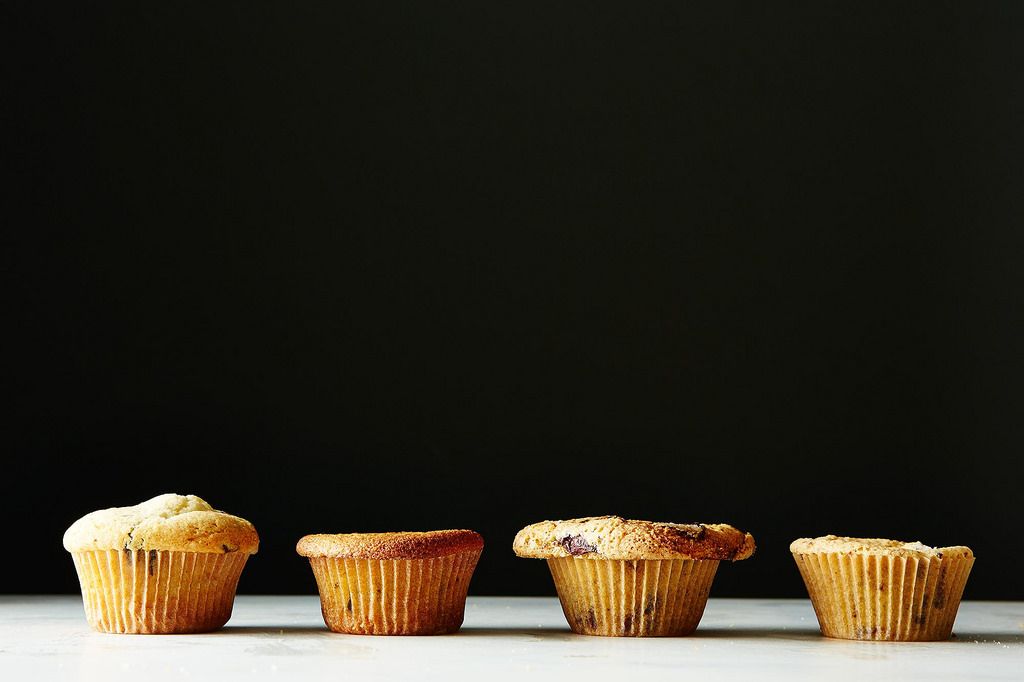
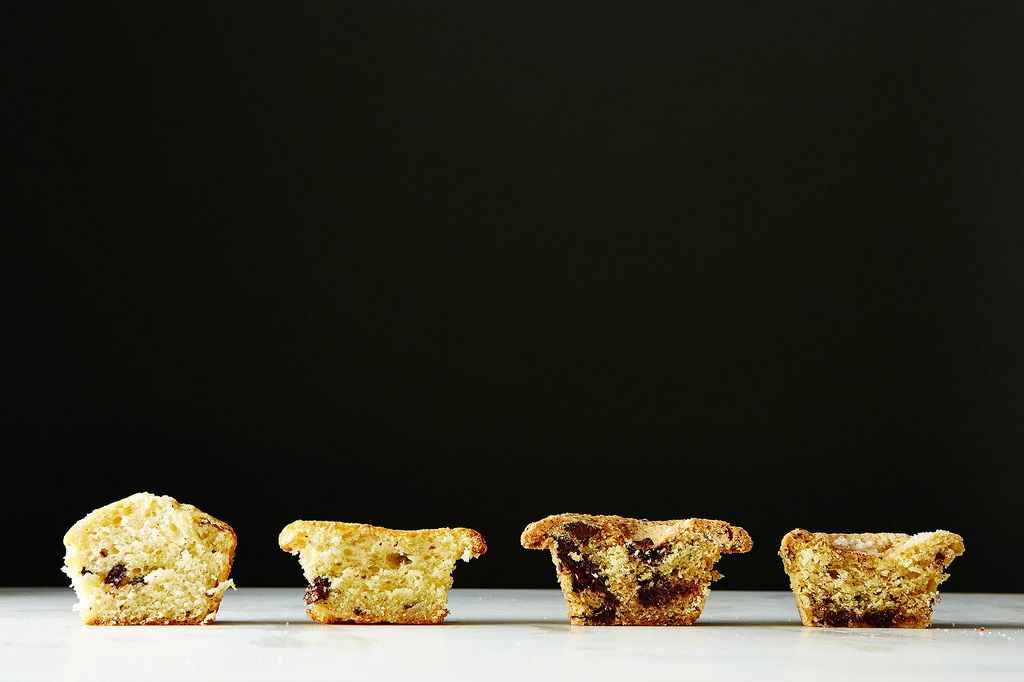
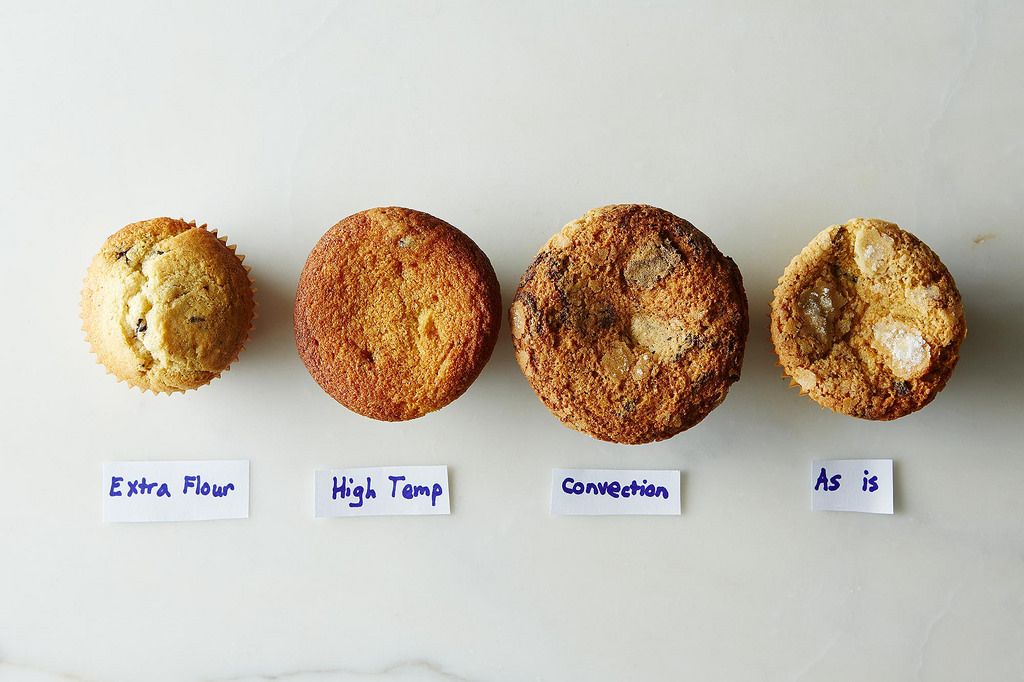
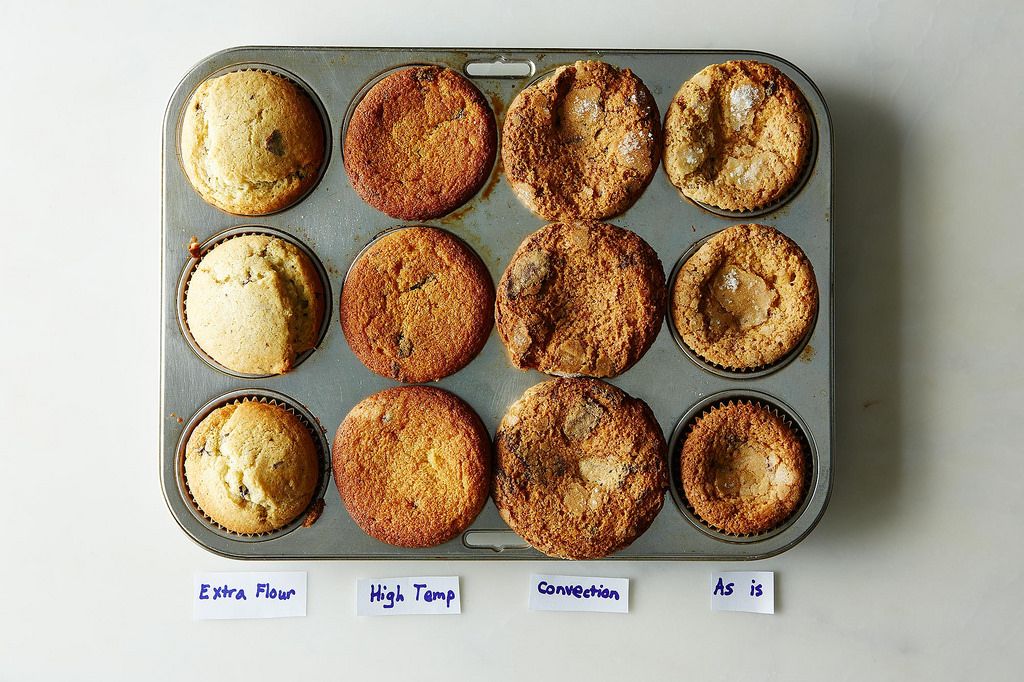
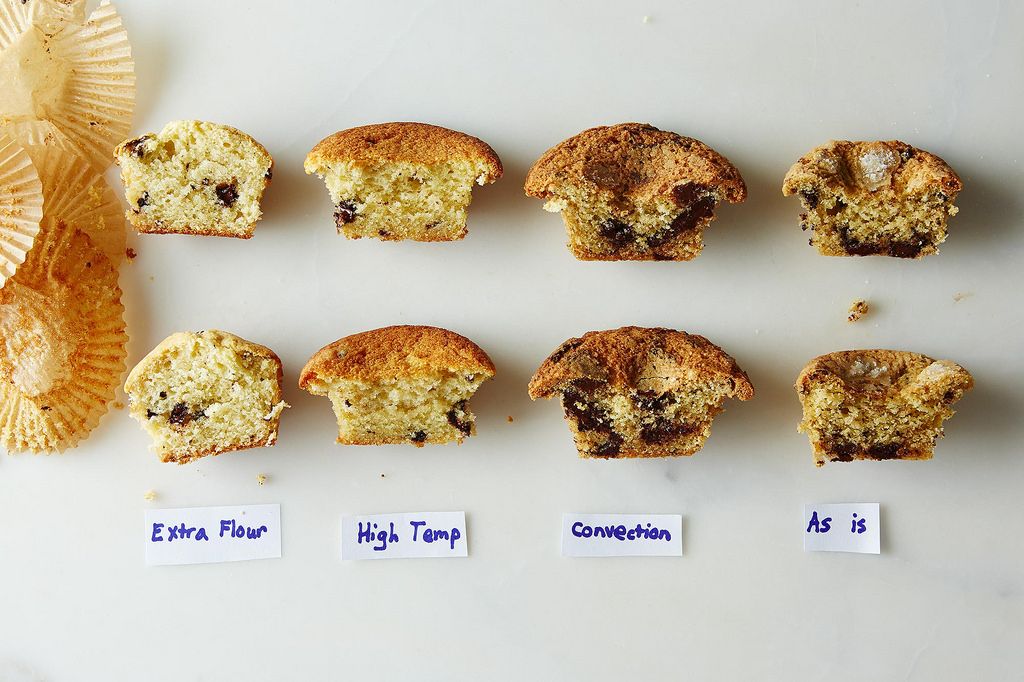

See what other Food52 readers are saying.